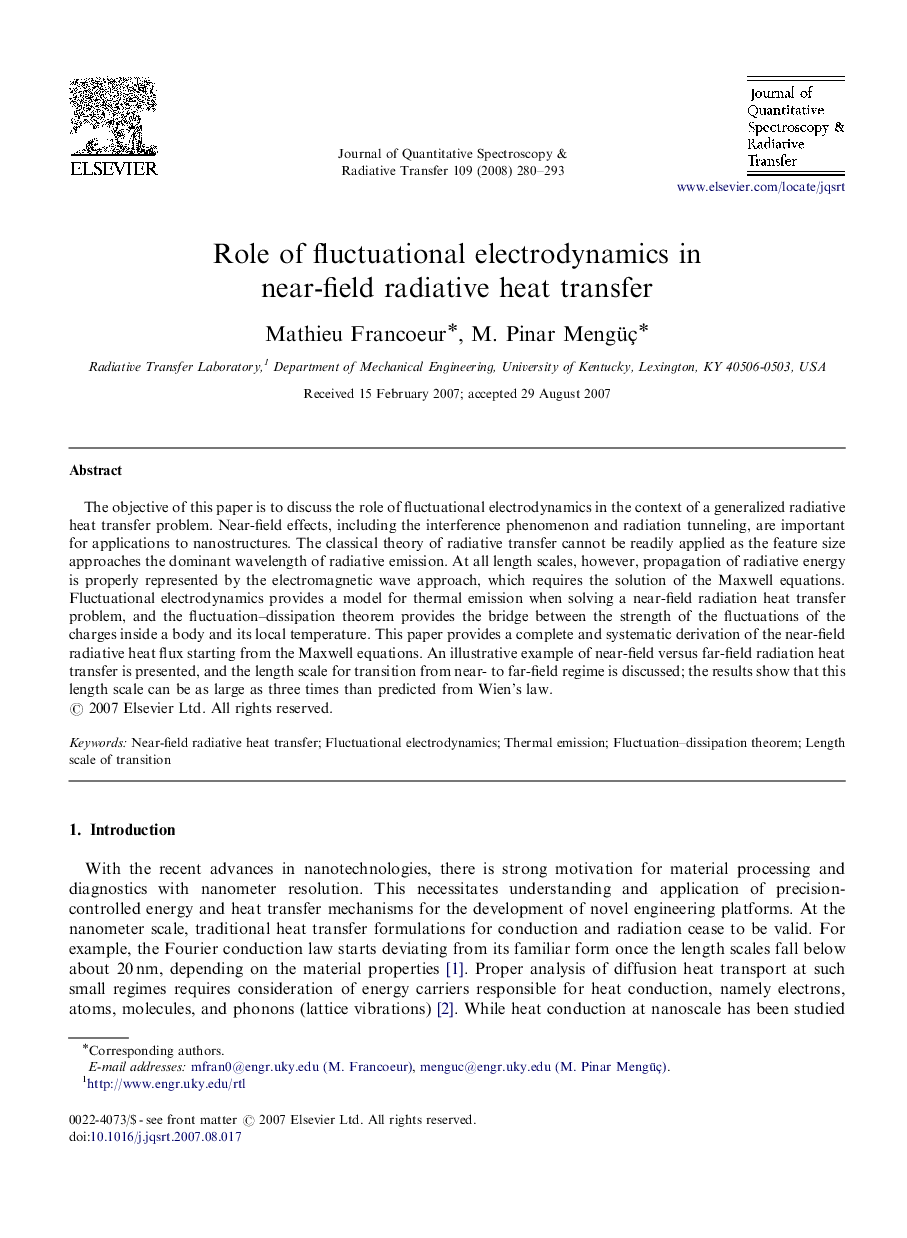| Article ID | Journal | Published Year | Pages | File Type |
|---|---|---|---|---|
| 5430250 | Journal of Quantitative Spectroscopy and Radiative Transfer | 2008 | 14 Pages |
The objective of this paper is to discuss the role of fluctuational electrodynamics in the context of a generalized radiative heat transfer problem. Near-field effects, including the interference phenomenon and radiation tunneling, are important for applications to nanostructures. The classical theory of radiative transfer cannot be readily applied as the feature size approaches the dominant wavelength of radiative emission. At all length scales, however, propagation of radiative energy is properly represented by the electromagnetic wave approach, which requires the solution of the Maxwell equations. Fluctuational electrodynamics provides a model for thermal emission when solving a near-field radiation heat transfer problem, and the fluctuation-dissipation theorem provides the bridge between the strength of the fluctuations of the charges inside a body and its local temperature. This paper provides a complete and systematic derivation of the near-field radiative heat flux starting from the Maxwell equations. An illustrative example of near-field versus far-field radiation heat transfer is presented, and the length scale for transition from near- to far-field regime is discussed; the results show that this length scale can be as large as three times than predicted from Wien's law.
